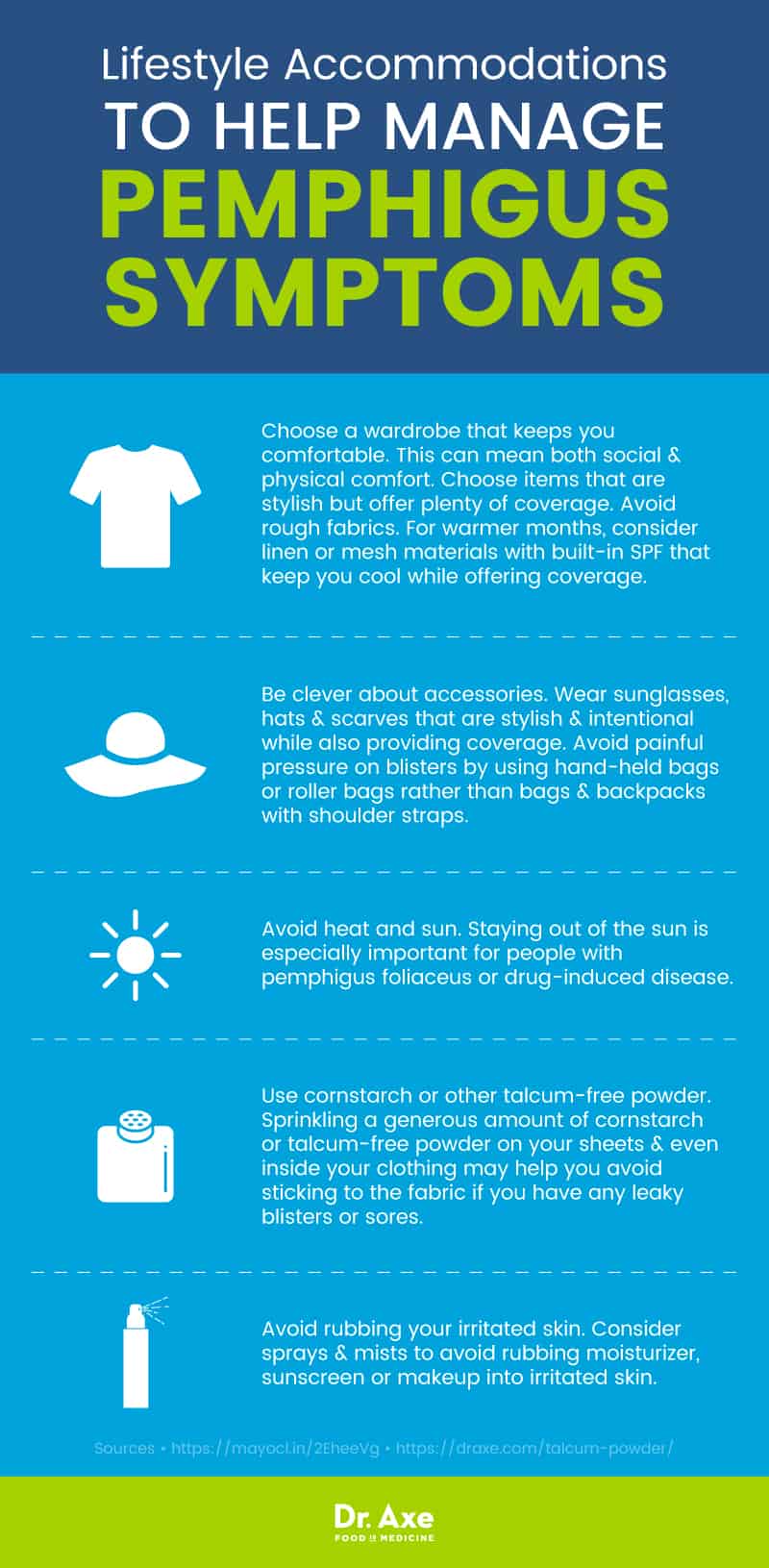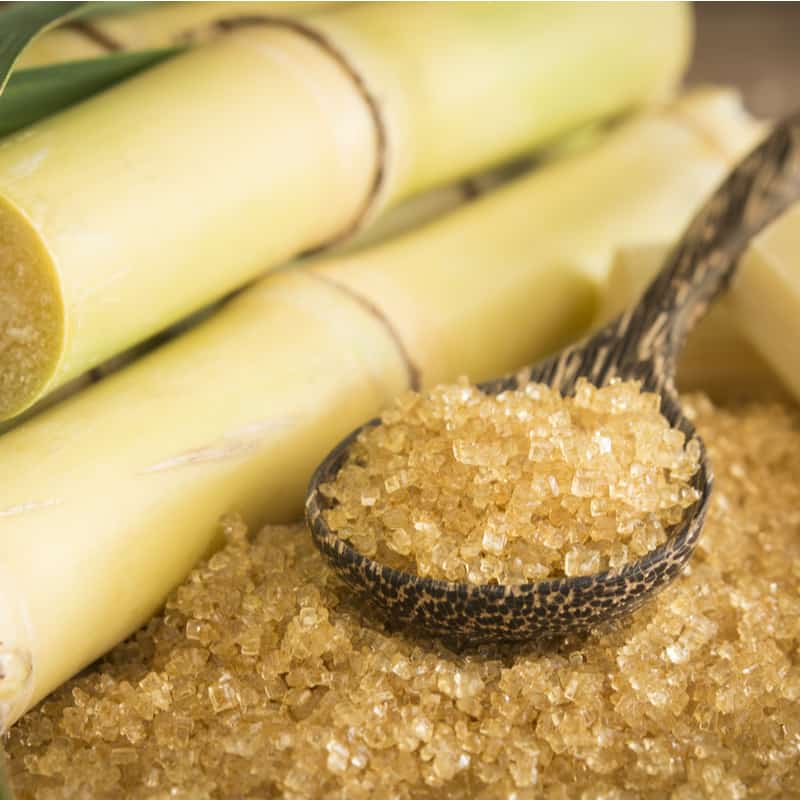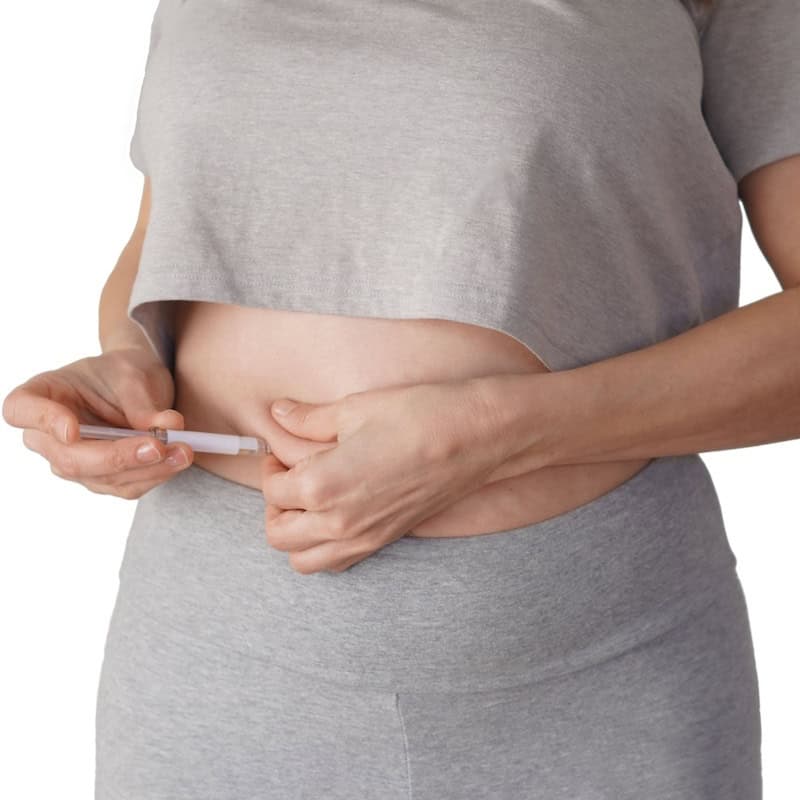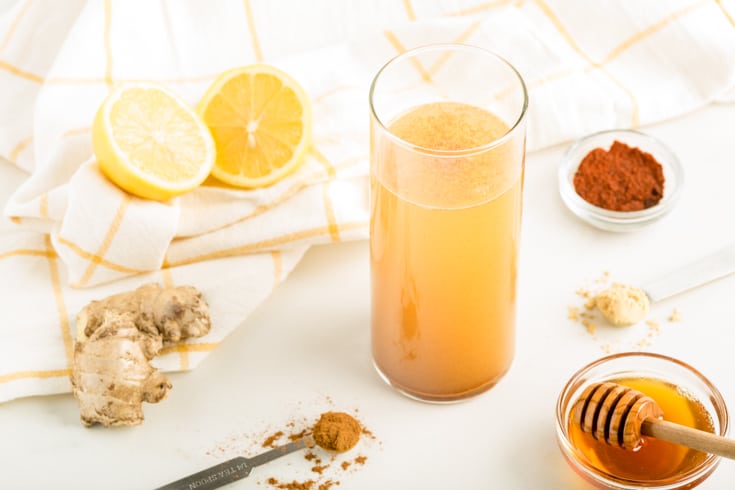This Dr. Axe content is medically reviewed or fact checked to ensure factually accurate information.
With strict editorial sourcing guidelines, we only link to academic research institutions, reputable media sites and, when research is available, medically peer-reviewed studies. Note that the numbers in parentheses (1, 2, etc.) are clickable links to these studies.
The information in our articles is NOT intended to replace a one-on-one relationship with a qualified health care professional and is not intended as medical advice.
This article is based on scientific evidence, written by experts and fact checked by our trained editorial staff. Note that the numbers in parentheses (1, 2, etc.) are clickable links to medically peer-reviewed studies.
Our team includes licensed nutritionists and dietitians, certified health education specialists, as well as certified strength and conditioning specialists, personal trainers and corrective exercise specialists. Our team aims to be not only thorough with its research, but also objective and unbiased.
The information in our articles is NOT intended to replace a one-on-one relationship with a qualified health care professional and is not intended as medical advice.
Pemphigus (+ 5 Natural Ways to Help Relieve Symptoms)
April 7, 2018

Pemphigus is an autoimmune disease that affects the skin. It causes blisters on the skin and in the mouth, throat, nose, eyes and genitals.
There are medical and natural treatments that can help relieve and even prevent some symptoms of the condition. There is currently no cure for pemphigus.
What Is Pemphigus?
Pemphigus is an autoimmune condition that causes the skin to blister. It happens when the body’s immune system attacks healthy cells in the outer layers of skin and the mucous membranes. This causes skin to separate. Fluid collects and creates skin bubbles. These blisters can cover a large amount of skin. (1)
Pemphigus is not contagious, and it’s not inherited. That means parents can’t pass the condition to their children. However, there is a genetic component of the disease. Some genes put people at higher risk to develop pemphigus.
Pemphigus also resembles a condition called pemphigoid (also called bullous pemphigoid). This condition is similar, causing large, tough blisters on much of the skin. It mostly affects older adults and can be deadly. Pemphigoid is also an autoimmune condition.
Signs and Symptoms
In general, pemphigus symptoms include:
- Blisters on the skin
- Blisters in the mouth, throat, nose or eyes
- Blisters on the scalp
- Painful or itchy sores
There are several types of pemphigus, however. An accurate pemphigus definition and your likely symptoms depend on the type of disease you have.The different types and symptoms include: (2)
- Pemphigus vulgaris. This is the most common form of the disease in the United States. Most people first notice painful blisters in the mouth (pemphigus in the mouth, or oral pemphigus blisters), which are the most common early sign. The blisters often eventually spread to other parts of the skin and mucous membranes, including the throat and genitals. They come and go and typically don’t cause scars or itch. Other symptoms include: (3)
- Crusty or crumbly skin at the site of popped or healing blisters
- Oozing blisters
- Pemphigus foliaceus. This type of disease often causes itchy, but not painful, skin patches and blisters. They usually start on the face and scalp, then appear elsewhere as well. They don’t develop in the mouth.
- IgA pemphigus. Caused by an antibody called IgA, this type of pemphigus causes blisters on the face and scalp. People with this form may also develop small, pus-filled bumps.
- Pemphigus vegetans. This form of the disease causes thick sores in the groin and underarm area.
- Paraneoplastic pemphigus. This is a rare form that affects people with certain cancers. It causes painful sores or cuts and scars in the mouth, lips, eyes and eyelids. It also causes blisters on the skin and dangerous lung problems

Causes and Risk Factors
Pemphigus causes are mostly unknown. Here’s what is known: (3)
- Pemphigus is an autoimmune condition, meaning the body’s own defense system (the immune system) attacks healthy skin cells.
- There is some level of genetic risk, but the condition isn’t caused by a specific gene.
- Taking certain medications, such as ACE inhibitors (for blood pressure) or penicillamine (to clear the blood of certain substances), may cause pemphigus in some people. This type of pemphigus usually resolves when the drug is stopped.
Risk factors for pemphigus include: (4)
- Jewish ancestry
- Mediterranean ancestry
- Age 50 or older
- Diagnosis with an autoimmune condition called myasthenia gravis
- Living in the Brazilian rainforest or in other rural, tropical areas of Latin America
- Taking penicillamine
- Having a tumor in your lymph node, thymus gland, spleen or tonsils
Conventional Treatment
Pemphigus can develop in people who are otherwise healthy. Some sores may take a long time to heal, and some may never go away completely. However, in many people, the condition can be kept under control. People can often reduce the number and severity of blisters and sores they have and keep the condition from getting worse.
Before the medicines listed below — such as prednisone (a corticosteroid) and immunosuppressants — were used for pemphigus, the condition was usually deadly within about five years. Now, with medical treatment, pemphigus rarely causes death. Modern conventional pemphigus treatment options include: (5, 6)
- Corticosteroid creams or pills
- Immunosuppressant drugs, such as azathioprine or mycophenolate mofetil
- Biologic drugs, such as rituximab
- Antibiotics, antivirals and antifungals to help fight infections
- Plasmapheresis (removing plasma from your blood)
- Extracorporeal photochemotherapy (treating your blood to kill white blood cells, then putting the treated blood back in your body)
- Wound care, other medicines and hospital stays
Natural Ways to Help Manage Symptoms
The use of modern medicine in the treatment of pemphigus has saved many lives and extended many more. Pemphigus used to be deadly by about five years after diagnosis. It is not recommended that you stop taking conventional treatments for pemphigus.
However, there are many natural approaches you can take toward managing your symptoms and side effects, and to prevent flares. In some cases, your doctor may even be comfortable altering or supplementing your conventional treatment with natural topical (applied to the skin) or oral therapies.
Consider these natural ways to manage your condition:
1. Protect your skin
Clearly, the skin and mucous membranes are the visible battle grounds for people fighting pemphigus. Complications, scarring and serious infections can arise when the skin breaks or gets infected. That’s why it’s very important to protect the integrity of your skin. (7)
- Avoid injuring your skin. Avoid contact sports and activities (like hiking through heavy brush and bushes) that could cause blisters or sores to rupture or that could cause cuts or tears in your skin. Keeping skin clear of cuts and breaks lowers your chance of infection and irritation.
- Avoid skin infections. Change your bed linens and towels frequently, and wash them in gentle, non-irritating detergents. Change clothes when you get sweaty and always put on clean clothes after you shower. Avoid hot tubs and places where your skin can come into contact with harsh chemical irritants or lots of germs.
- Follow proper wound care. Take special care of your blisters and sores. This means gently but thoroughly cleaning your skin and protecting it from dirt, debris and germs. Use bandages or ointments when needed to protect broken skin from infection. If you have an infection, use antimicrobial ointments, regular cleaning and bandages to keep it from getting worse.
- Ask about safe skin creams and ointments. Your doctor may be able to recommend natural options to moisturize the skin, protect it from bacteria and calm any pain, inflammation or itching you may have. Just be sure that anything you put on your skin does not have immune-boosting properties, since too much immune system activity causes the pemphigus symptoms. Options using Dr. Axe’s natural recipes may include (once you’ve spoken with your physician):
- Naturally antibacterial essential oils (diluted in carrier oil)
- Natural moisturizers and anti-inflammation creams
- Anti-itch creams with natural ingredients
2. Make simple lifestyle accommodations
Sometimes all it takes to avoid symptoms (or keep them from getting worse) is to change how you approach things. Simple swaps and thinking ahead may help you keep discomfort in check.
- Choose a wardrobe that keeps you comfortable. This can mean both social and physical comfort.
- If you are self-conscious about the blisters during flares, build a wardrobe that includes stylish but high-coverage pieces, such as crew neck sweaters, long pants, turtlenecks, long-sleeve button-downs, scarves and other full-coverage basics.
- For warmer months or warmer climates, consider linen or mesh materials with built-in SPF, as well as items meant to be worn as cover-ups. The lightweight materials may help keep you cool while also offering coverage.
- Avoid rough materials and styles that will rub against your skin. Opt for breathable fabrics, such as cotton, to keep air circulating.
- Bandage seeping blisters to keep ointment and pus from coming through your clothes. If you happen to have oozing skin while you are out and about, clean and bandage it as soon as you can. Then keep your clothing from touching that area of skin if possible. That way you may be able to avoid having the blister dry attached to the fabric, which can be painful to pull away later.
- Be clever about accessories. Adjust the way you wear accessories for maximum comfort.
- If you have blisters you wish to conceal on highly visible areas, such as your eyes, neck or scalp, consider accessories that look intentional. Options include sunglasses, ball caps, cowboy hats, broad-brimmed hats, scarves and ascots.
- Avoid painful pressure on blister areas by shifting how you carry accessories such as purses, backpacks and other items. Use a hand clutch rather than a shoulder strap, for instance, or opt for a roller bag over a regular backpack.
- Avoid heat and sun. Staying out of the sun is especially important for people with pemphigus foliaceus or drug-induced disease.
- Use cornstarch or other talcum-free powder. Sprinkling a generous amount of cornstarch or talcum-free powder on your sheets and even inside your clothing may help you avoid sticking to the fabric if you have any leaky blisters or sores.
- Avoid rubbing your irritated skin. If needed, consider sprays and mists to avoid rubbing moisturizer, sunscreen or makeup into irritated skin. Just be sure that the skin product won’t further burn, itch or aggravate your skin. Try testing on a small area or ask your doctor for recommendations.

3. Keep stress levels low
High amounts of stress can make you more likely to have a flare. This is common in autoimmune conditions — stress seems to trigger symptoms. Keep stress in check with ideas for natural stress relief:
- Massage. While this may not be useful for people with large areas of affected skin, massage can help relieve stress. It may also soothe muscle pain from medications. You can also consider natural pain-relieving muscle rub ointments if you have joint or muscle pain caused by medications — just talk to your doctor before use.
- Exercise or do physical therapy. Although there is a shocking lack of research on the impact of exercise on pemphigus and its sufferers, one small study did find that four months of physical therapy exercises improved quality of life among people with pemphigus. (8) In addition, exercise is a well-known stress-reliever in general.
- Plan ahead. Whether you are currently nearly clear or whether you’re in the midst of a flare, it pays to plan ahead. This can make flares as well as daily life easier to cope with, leaving fewer reasons for you to stress out about your pemphigus.
- Have the skin- and wound-care supplies you need well stocked in your cupboards.
- Keep your physicians’ contact information where it is easily accessible.
- Consider a medical alert bracelet.
- Have conversations with key people in your life (kids, significant others, family, supervisors) about your condition. Let them know what it’s like when you have flares and what it will mean for your ability to take part in activities. This way it’s out in the open and it’s not ‘news’ when something does come up.
- Find a pemphigus-friendly hobby. In general, people with pemphigus can usually be fairly active when their condition is controlled. However, having a stable hobby can help keep you balanced when symptoms do worsen. Consider activities that are calming for you and safe for your skin, such as painting, writing in a journal, starting a blog, listening to podcasts and other therapeutic activities.
4. Take care of your mouth
Since blisters in the mouth and throat are a key symptom in multiple types of pemphigus, take special care of your mucous membranes. This can help you soothe pain, avoid irritation or infection and even prevent blisters from worsening. However, when blisters are active, this is easier said than done.
Consider some of these tips for taking care of your oral health:
- Work with a dentist who is familiar with pemphigus. He or she can help you find ways to effectively clean your teeth and mouth when you have sores.
- Use a soft toothbrush.
- Ask your dentist about natural mouthwashes or natural options for killing germs and relieving oral pain. If you do use a pain-relieving mouthwash, use it just before eating and cleaning your teeth.
- Avoid foods that are sharp, acidic, crunchy or spicy when you have oral sores. Onions and garlic may also irritate sores.
- Consider avoiding foods containing high levels of thiol and phenol. Limited research suggests these foods may trigger symptoms. (9) Keep in mind, however, that thiol and phenol are important antioxidants. Omitting all foods with high thiols and phenols may lead to an imbalanced diet. More research is needed on the importance of these antioxidants for pemphigus. Some foods with high amounts include: (10, 11, 12)
- Cucumber
- Red pepper
- Avocado
- Green beans
- Spinach
- Peas
- Artichoke
- Berries
- Cocoa and chocolate
- Black and green tea
- Herbs and spices
- Buckwheat
- Cider
- Coffee
- Dairy and soy
5. Consider herbal remedies and supplements
Always talk to your primary pemphigus physician before trying an herb or supplement. They can interact with your medications or even aggravate symptoms. Also, do not stop taking your prescribed medications or change how you take them without talking to your doctor first.
If you are interested in supplements and natural remedies, be sure to investigate the known properties of them first. Many stimulate the immune system, giving it a “boost” that could actually make pemphigus worse. Natural therapies are not risk-free. However, some research suggests these may be helpful for people with pemphigus:
- Calcium and vitamin D supplements. Some people taking corticosteroids need these supplements, according to the Mayo Clinic. (13) Research also suggests vitamin D deficiency is common in people with pemphigus. (14)
- C. fistula fruit oil topical applications. Some early research in the lab and with animals suggests that the oil fights fungus, bacteria and inflammation. The research also suggested it may help speed wound healing of pemphigus blisters and sores. (15)
- The antioxidant uric acid. Research in healthy people and patients with pemphigus found that uric acid levels were particularly low in people who had pemphigus with lesions in the mouth and mucous membranes. (16) Uric acid is created by our bodies when we break down purines in food. Foods high in purines include anchovies, mackerel, liver, dried peas and beans, and beer. (17)
- Traditional Chinese medicine (TCM) from a practitioner knowledgeable about pemphigus. Some research suggests that certain preparations can shorten healing time and reduce time and dose requirements for drugs such as corticosteroids and immunosuppressants when they are used together. A review paper discussed the following preparations as the most likely to be effective based on their recipes and some limited human studies: (18, 19)
- Licorice root compound (glycyrrhizin preparations)
- Tripterygium wilfordii Hook F (TwHF) root extracts, 10 mg tablets
- Total glucosides of paeony (TGP)
- JinGui ShenQi pill (plus prednisone)
- TianPaoChuang granules (plus corticosteroids and immunosuppressants)
- ShiDuQing or BaSheng Tan JiaJiang (in combination with conventional medicines)
The review also discussed other options, including herbal baths and gargles. However, more research is needed to determine if they are safe and effective for relieving pemphigus symptoms. Another review of such therapies found that a combination of TCM with conventional medicine may be useful, but also stated that more research is required. (20)
Precautions
- Do not attempt to self-diagnose or self-treat pemphigus. Pemphigus can cause death without proper treatment. Most people require long-term, professional medical management — including drugs.
- Do not stop or change medications or treatments without first talking with your doctor. Some medication side effects can be avoided with dose adjustments or other changes.
- Regular visits to your health care team, including your dermatologist, dentist, primary care physician and ophthalmologist can help find problems, such as infections, early — before they cause serious complications.
- Call a doctor if you have signs of skin infection, such as swelling, foul-smelling discharge from the blisters, fever or skin that becomes very painful, hot and red.
- The International Pemphigus and Pemphigoid Foundation recommends against using any natural therapies that boost the immune system, since they believe such remedies may boost disease activity as well. (21) Research does suggest that immune-stimulating herbal therapies, such as echinacea supplements, can lead to pemphigus flares. (22) Carefully investigate the potential health impact of any natural therapy before beginning, and discuss its use with your physician.
Final Thoughts
- Pemphigus is an autoimmune disorder that causes blisters and sores in the mucous membranes and skin.
- There are several different types of this disease. Treatment and symptom management will depend on the particular diagnosis you have.
- There is really no known cause for pemphigus, but risk factors include middle age and certain ancestries.
- With conventional medical treatment, most people can get symptoms under control. There is no cure for pemphigus.
- Common medical treatments include corticosteroids, immunosuppressants, biologics and proper wound care.







